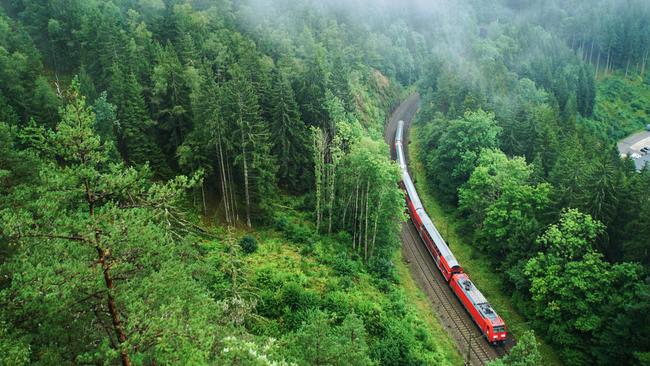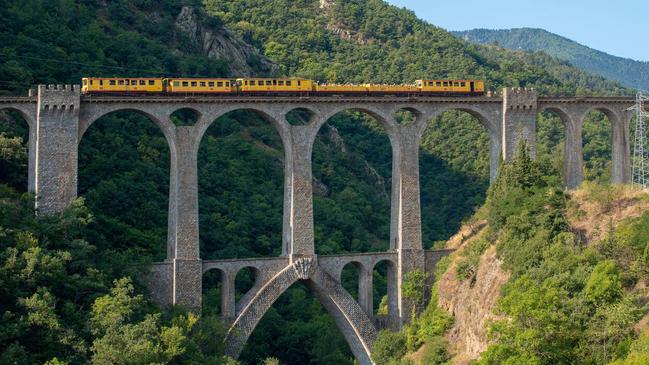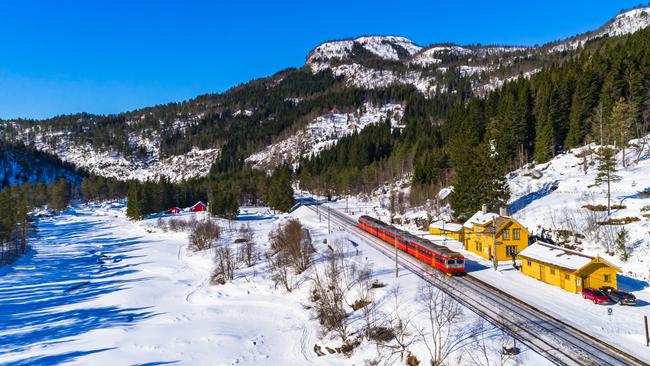Fine dining? Skip the Michelin stars and you’ll be on the right track
There is nothing greater than leaving your seat on the slow train to while away a good 45 minutes in the dining car.

When I returned from a month in Europe, people frequently asked me which restaurants I had eaten at. Truth be told, I didn’t eat in many restaurants; at least, few famous ones. One night, admittedly, I dined at a one-Michelin-starred establishment that had an eight-course menu for €110 ($185). It was the worst meal of our trip. All night I longed to be at the pasta bar next door eating a €10 bowl of tagliatelle with pecorino and drinking a glass of €5 local vino. And I would have been out in an hour or so – and thereafter free to enjoy some mind-blowing gelato – instead of being trapped in my seat as scraping waiters encouraged me to admire and coo at every silly confection of the chef.
Europe for me is at its best at entry-level dining. In France I would rather buy from a boulangerie than a brasserie. Want the best piece of food you’ve ever tasted? Go into a patisserie on any Parisian suburban street, as long as it is off the tourist drag, and order a tarte bourdaloue (pear and almond tart) and try not to die of happiness as you eat it. And you’ll have euros left over for a dinner later that evening of poulet et frites and a beautifully dressed lettuce salad with crusty bread and some earthy Provençal wine at an atmospheric back-alley bistro. Now that’s fine dining.
If you like this, try:
The new hotels defining the perfect Roman holiday
Alesund: a town so magical they’re keeping it secret
The biscuit-scented town that should be on your European travel itinerary
One place that always gives me untold joy when travelling is train stations. There is rarely a major station in Europe that doesn’t contain at least one dining gem, a place where commuters arrive early to have breakfast before the day begins, or where travellers in the know gather to collect snacks for the long journey ahead. Even into the evening you can sometimes find a worthy bolthole offering commuters something hearty to eat after arriving back late from a day’s work.

Mercifully these are fairly easy to spot: head to the place that is virtually un-signed, family run, definitely not part of any chain, and where a large number of locals are congregated, usually standing drinking coffee in the decidedly unhurried fashion of Europeans. You can be assured of not only eating well but encountering local specialities, for few places offer more giveaways to what’s good locally than the area around city train stations, themselves often historic and beautiful buildings.
In Germany and the Nordic countries you could eat almost exclusively at railway stations if sausages are your thing (and, I’ll be honest here, they are mine). In every station, or nearby, you’ll find some natty character obsessively turning sausages on a little grill. Look for subtle regional variations that let you know you’re not where you were yesterday. Some towns may specialise in bratwurst, others weisswurst or, if you’re lucky, regensburger wurst, that delicious boiled sausage so beloved by Bavarians. You might get sauerkraut or ketchup or mustard, but always the key is the quality of the sausage and the fit of the bread around it (the roll must be crunchy but not too hard, and a perfect size for the sausage). A pretzel and a sausage as separate entities is also a good purchase.
A French train station without a good boulangerie in the vicinity is a disgrace to its nation. My preference when travelling in France is to arrive early to stock up on croissants and pains au chocolat, and probably a largish box of macarons, so as to be prepared for the day ahead. A painful delay on the platform is eased considerably by the knowledge of a stash of perfectly flaky pastries stored safely in the backpack. And if you can’t find a boulangerie or patisserie at the station itself, there will be one nearby; it’s probably the law.
Europeans governments – the French in particular – are trying to lure travellers back to rail travel to combat the onslaught of low-cost airlines (especially the Irish juggernaut Ryanair) that have changed the way Europeans travel. In June, the French parliament passed a directive making short-haul flights illegal, with airlines no longer permitted to fly between cities where a rail alternative of 2.5 hours or less exists.

I can see the attraction of low-cost flying – in fact I this year took a 40-minute flight from Rome to Brindisi in Italy’s south, for the worryingly low price of €45. But as anyone who has flown Ryanair could tell you, it was a comical rather than pleasant experience, featuring stressed passengers, flight attendants selling scratch lotto tickets, and questionable cleanliness. Worse, the taxi ride to Rome’s Fiumicino Airport was harrowing, the driver believing himself competing at Monza. And as a confirmed train enthusiast, I felt guilty the entire time.
The trick to really successful and enjoyable rail travel lies in mostly catching fast trains. The Paris to Nice TGV (high-speed rail service) takes five to six hours, door to door, and the countryside is enthralling. Roll past medieval stone towns crowned with gorgeous castles and cathedrals flanked by fields of shimmering golden wheat, without having to bother visiting them. Florence to Rome, meanwhile, can take as little as an hour and 20 minutes; blink and you’ll miss the landscape. Not that you’ll mind because you’ll be busy eating the mortadella-stuffed focaccia you bought at the station before departure.
In Spain, more than 300 high-speed trains operate daily, and you can get jamon rolls at every self-respecting station. The Spanish are so passionate about high-speed rail that if a service is 15 minutes late, commuters receive a 50 per cent refund – and a full refund for a 30-minute delay. The journey from Madrid to Barcelona takes only 2.5 hours and new lines are constantly being added. This month, a route connecting Madrid to León in the country’s north opens; late next year high-speed trains will run from Madrid all the way to Paris, and by 2027 Madrid will be connected by fast train with Lisbon in next-door Portugal.

Since the 1980s, the Spanish have invested almost €60 billion on high-speed tracks (which are a different gauge to regular tracks) but the cost has been worth it; tourism in cities connected by fast trains is booming. It’s something for Australia to think about.
Apart from getting you to your destination more effectively, high-speed trains have two other advantages: Wi-Fi connectivity and dining cars.
For me there is nothing greater than leaving your seat to while away a good 45 minutes in a dining car. Sometimes you can even jag these on a slow train. In Norway, we made the seven-hour rail journey traversing the outrageously spectacular Oslo to Bergen route, past fjords, forests and waterfalls. My favourite part of this long, absorbing trip was spending time in the dining car. Here, over Norwegian hotdogs and freshly brewed coffee, I looked out over glorious Sløddfjord and listened to the conversation of Americans trying to figure out the vagaries of the Nordic menu.
“What is brown cheese?” asked an elderly woman loudly, her back to the view.
“Ah, that is a Norwegian speciality,” the conductor answered cryptically.
One that I might just try, on my next train journey.
-
Tickets, please: I travelled around Europe on Eurail, a service I’ve used and loved since the 1990s. Eurail gives access to trains in 33 European countries on the one ticket. Some routes, especially high-speed services and popular tourist lines (including the Bergen-Oslo route) require seat bookings made a few days ahead of the journey. These often incur supplements, usually between €5-€50. Prices of Eurail passes vary according to the age of the passenger and the duration of the ticket but start at $US208 ($330). Eurail also gives you access to regional trains, which is especially handy in Italy and the south of France: you can jump from train to train along the Cinque Terre, or in the south of France along the scenic route that runs the length of the Cote d’Azur, without having to buy tickets for each small journey. You can also get the Leonardo Express from Rome’s Fiumicino Airport to the city using your Eurail pass without having to book. It’s a brilliant service. eurail.com








To join the conversation, please log in. Don't have an account? Register
Join the conversation, you are commenting as Logout